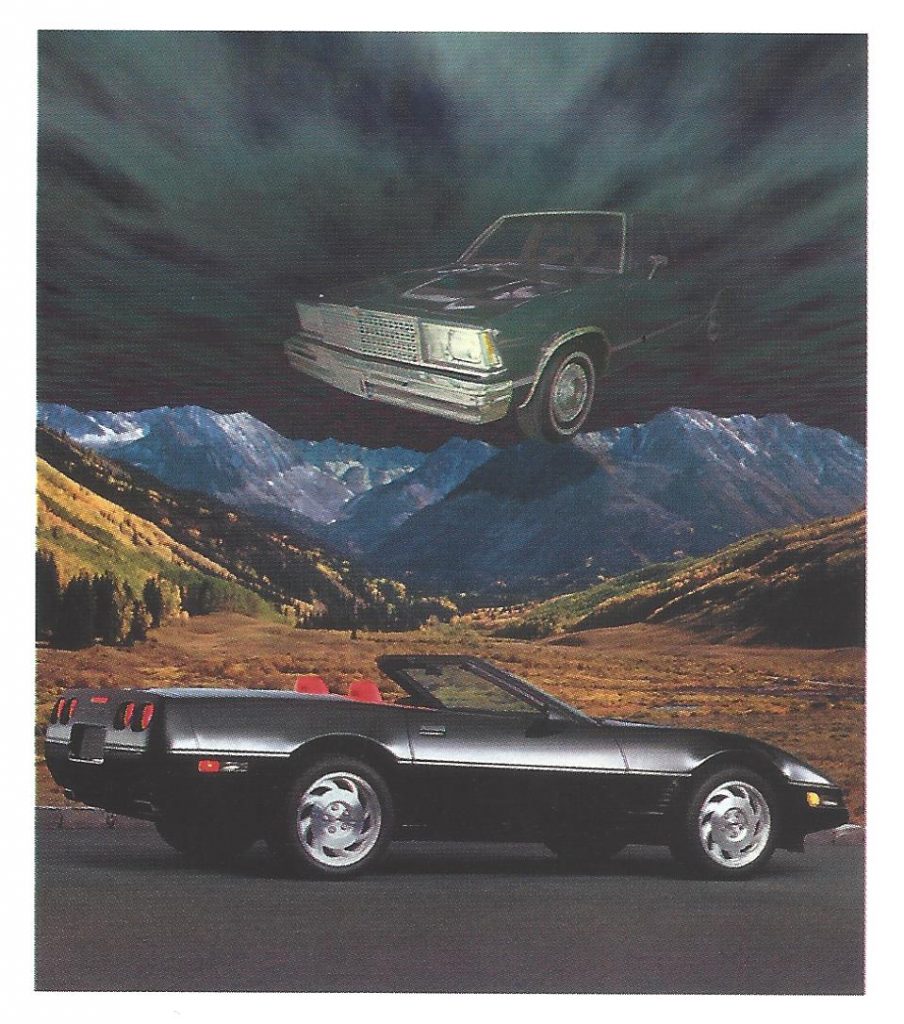Your dad didn’t use synthetics when you were a kid, so why should you use them now? Isn’t your car just like his was? In a word, no. This is not your father’s Oldsmobile.
This article is from the September 1995 issue of the AMSOIL Action News, Dealer Magazine.
Over the past 25 years, cars have become more fuel efficient and less polluting, due to demands made by the Environmental Protection Agency on automakers.
Automakers have complied with EPA mandates by building smaller, hotter-running engines and more aerodynamic bodies.
Cars in your father’s era had relatively large components with relatively large clearances. Your car has small components with tight clearances.
Conventional oils lubricate and protect just fine in large-toleranced engines which use high viscosity oils. High viscosity in itself gives conventional oils good protective capacity.
But high viscosity oils don’t work in tight-tolerance engines, Tight-tolerance engines require low viscosity oils. And that’s one place conventional oils fall down on the job. Low viscosity conventional oils require a lot of viscosity index improver to provide high temperature wear protection. When those polymers rupture, the oil becomes too light to protect adequately and the engine’s wear rate skyrockets.
Synthetics protect well no matter what their viscosity. Low viscosity synthetics require very little viscosity index improver, so the opportunity for them to become too light is very small. Plus, synthetic oils have higher film strength than conventional oils do, which means their resistance to metal-to-metal breakthrough is much higher.

That great big, powerful engine of your dad’s ran pretty cool. It never worked as hard as your engine works.
Your engine cranks out many more revolutions per minute than your dads did: that’s how you get so much horsepower from such a small engine. Each revolution generates friction and friction generates heat. Your car runs hot.
Not only does your engine run hotter than older models did, it has less ability to dissipate heat. The sleek body surrounding it looks great and reduces fuel consumption by reducing wind drag. It also reduces wind swirl around the engine, which significantly reduces an effective means of engine cooling. Finally, your small engine has a small oil sump and a small radiator, which means it has a small capacity for the two liquids it uses for cooling. Your engine is hot!
Heat’s not good for conventional oil. When conventional oil gets too hot, it loses light components to ‘boil-off’ and heavier ones to sludge and hard deposits. None of that stuff is good for your engine. Synthetics, on the other hand, lose very little to boil-off and are very resistant to sludge and hard deposit formation. Today’s high engine temperatures are no problem for synthetics. In fact, synthetics help engines run cooler than they do with conventional oils.
Synthetics are very slippery. They allow less friction to build in the engine, and, as you recall, friction generates heat. With synthetics, less heat builds in the engine.
Synthetics also carry heat away from the engine more efficiently than conventional oils do. Conventional oils’ laminar flow impedes their “lifting” heat from engine surfaces. Synthetics’ turbulent flow actively lifts heat from surfaces and deposits it well into the oil stream.
At the other extreme, cold temperatures cause conventional oils to set up. You’ve seen household paraffin wax. It’s a solid at room temperature. Paraffin is present in conventional motor oil. That’s why conventional oil flows sluggishly at startup, especially in cold temperatures.
Synthetics are paraffin-free. They provide excellent wear protection during startup and cold temperature operation.
By the way, now that you know why you should use synthetic motor oil, don’t you think you should tell your dad?
Reproduced With The Permission Of AMSOIL INC. All Rights Reserved.
*All trademarked names and images are the property of their respective owners and may be registered marks in some countries. No affiliation or endorsement claim, express or implied, is made by their use. All products advertised here are developed by AMSOIL for the use in the application shown.
SLS Note: To emphasize a point made at the beginning of the article: Over the past 25 years automakers have complied with EPA mandates by building smaller, hotter-running engines and more aerodynamic bodies.
The article was comparing the vehicles built between 1970 and 1995. The engines in 1995 models were smaller and hotter running than the engines in 1970 models.
Now think about the 2020 model year vehicles compared to 1995 models. (25 years ago) The engines are smaller, hotter running, many have turbochargers and product more power than the 1995 models. All the more reason that all of today’s vehicles need to be running high quality synthetics.
If you want to get the best performance and life out of your vehicles, use AMSOIL Synthetic Lubricants, The First In Synthetics.
